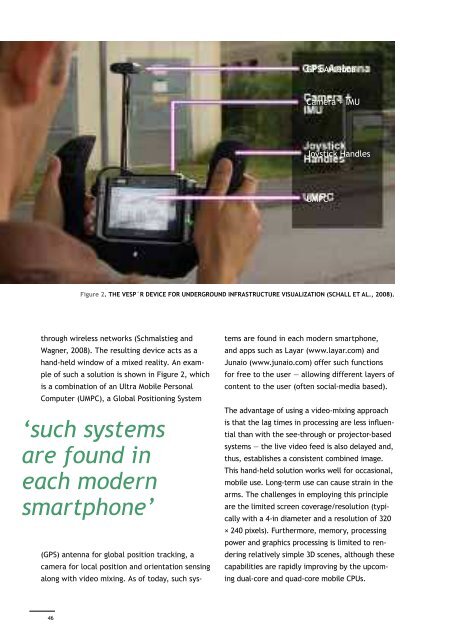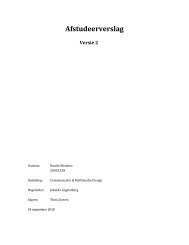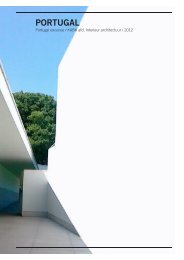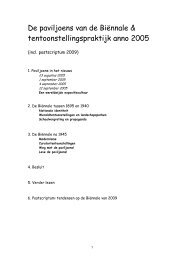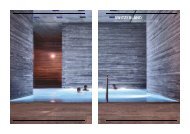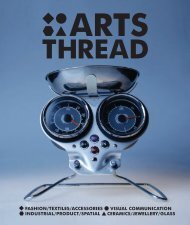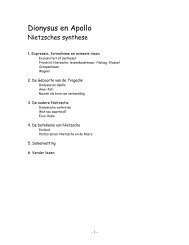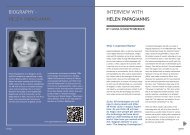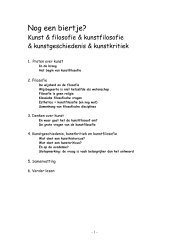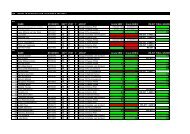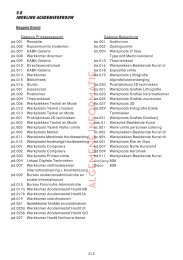download LR pdf - Kabk
download LR pdf - Kabk
download LR pdf - Kabk
Create successful ePaper yourself
Turn your PDF publications into a flip-book with our unique Google optimized e-Paper software.
GPS AntennaCamera + IMUJoystick HandlesUMPCFigure 2. The Vesp´R device for underground infrastructure visualization (Schall et al., 2008).2.3 Embedded displayAnother AR display option is to include a numberof small LCD screens in the observed object inorder to display the virtual elements directly onthe physical object. Although arguably an augmentationsolution, embedded screens do adddigital information on product surfaces.This practice is found in the later stages of prototypingmobile phones and similar informationappliances. Such screens typically have a similarresolution as that of PDAs and mobile phones,which is QVGA: 320 × 240 pixels. Such devicesare connected to a workstation by a specialisedcable, which can be omitted if autonomouslycomponents are used, such as a smartphone.Regular embedded screens can only be used onplanar surfaces and their size is limited whiletheir weight impedes larger use. With the adventof novel, flexible e-Paper and Organic Light-Emitting Diode (OLED) technologies, it mightbe possible to cover a part of a physical modelwith such screens. To our knowledge, no suchsystems have been developed or commercialisedso far. Although it does not support changinglight effects, the Luminex material approximatesthis by using an LED/fibreglass based fabric (seeFigure 4). A Dutch company recently presenteda fully interactive light-emitting fabric based onintegrated RGB LEDs labelled ‘lumalive’. Theseinitiatives can manifest as new ways to supportprototyping scenarios that require a high localresolution and complete unobstructedness. However,the fit to the underlying geometry remainsa challenge, as well as embedding the associatedcontrol electronics/wiring. An elegant solutionto the second challenge was given by (Saakes etal 2010) entitled “the slow display: by temporarilychanging the color of photochromatic paintproperties by UV laser projection. This effectlasts for a couple of minutes and demonstrateshow fashion and AR could meet.through wireless networks (Schmalstieg andWagner, 2008). The resulting device acts as ahand-held window of a mixed reality. An exampleof such a solution is shown in Figure 2, whichis a combination of an Ultra Mobile PersonalComputer (UMPC), a Global Positioning System‘such systemsare found ineach modernsmartphone’(GPS) antenna for global position tracking, acamera for local position and orientation sensingalong with video mixing. As of today, such systemsare found in each modern smartphone,and apps such as Layar (www.layar.com) andJunaio (www.junaio.com) offer such functionsfor free to the user — allowing different layers ofcontent to the user (often social-media based).The advantage of using a video-mixing approachis that the lag times in processing are less influentialthan with the see-through or projector-basedsystems — the live video feed is also delayed and,thus, establishes a consistent combined image.This hand-held solution works well for occasional,mobile use. Long-term use can cause strain in thearms. The challenges in employing this principleare the limited screen coverage/resolution (typicallywith a 4-in diameter and a resolution of 320× 240 pixels). Furthermore, memory, processingpower and graphics processing is limited to renderingrelatively simple 3D scenes, although thesecapabilities are rapidly improving by the upcomingdual-core and quad-core mobile CPUs.Figure 3. Impression of the Luminex material46 47


